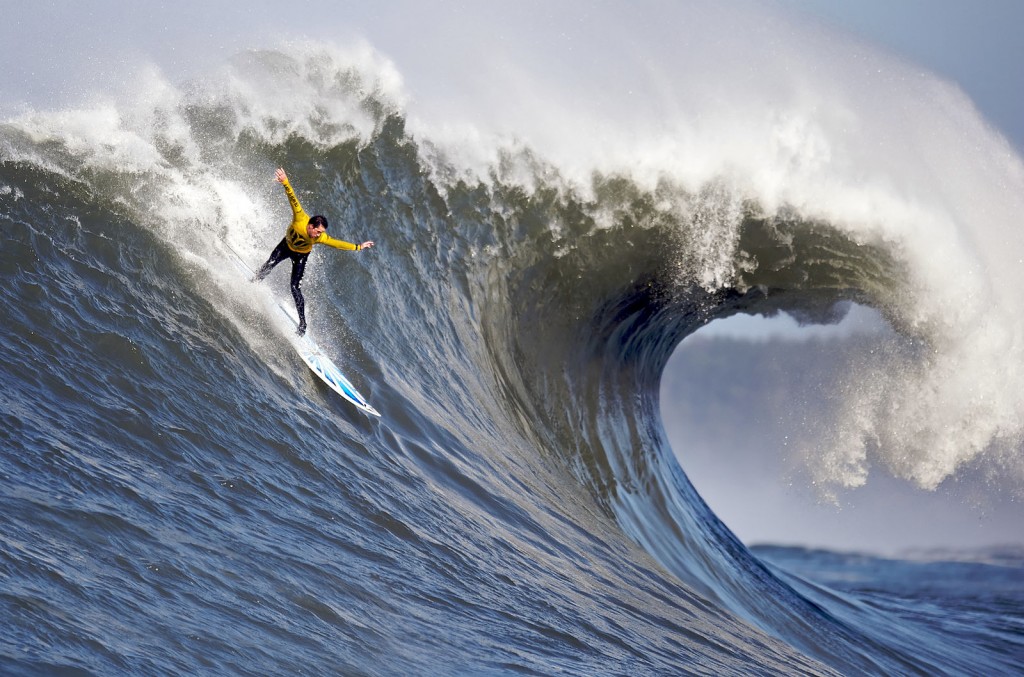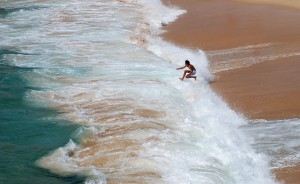America’s First Grid-Connected Wave Energy Conversion Project Comes Online

(EnviroNews World News) — Kaneohe Bay, Oahu, Hawaii — The first-ever grid-connected wave energy converter (WEC) system in the United States was brought online during the first week of June, 2015 at the U.S. Navy’s Wave Energy Test Site (WETS) in Kaneohe Bay on Oahu.
The prototype system, called Azura was developed by Northwest Energy Innovations (NWEI), and was brought online in partnership with the Navy and the Department of Energy (DOE). In a press release from June 9, 2015, NWEI also gave credit to Callaghan Innovation, and Energy Hydraulics Ltd (EHL) as vital partners in the project, and to Sea Engineering for its assistance in deploying the prototype.

The Azura system is said to be unique because it is multidirectional and harnesses power from various motions in the oceans. “Northwest Energy Innovations designed the Azura WEC in a unique way to extract power not just from the bobbing, or ‘heave’ motions—in MHK lingo—of the waves, but from back-and-forth ‘surge’ motions, as well,” reports ClickGreen, a UK-based online publication.
The effort and recent deployment of the prototype on Oahu represents the first time that a large-scale wave energy system has been tested on a grid in the United States. According to the NWEI release, the test at WETS is scheduled to last for 12 months.

The prototype will also be receiving testing and possibly validation by a third party — the University of Hawaii. This represents “a major milestone for the emerging American marine and hydrokinetic (MHK) energy industry,” says GreenClick.
A similar Azura pilot prototype had been tested in 2012 by NWEI at Northwest National Marine Renewable Energy Center’s test site off the coast of Oregon. That project was also supported by DOE.
The press release put out by NWEI on June 9, is just below:
First Grid Connected Wave Energy Device in the U.S. to be Independently Evaluated
Honolulu, June 8, 2015 – After a several months of preparation, Northwest Energy Innovations (NWEI) has successfully deployed its Azura™ wave energy device at the United States Navy’s Wave Energy Test Site (WETS) near Kaneohe Bay, Oahu, Hawai’i. The device will be deployed for 12 months of grid-connected testing as part of a rigorous program to commercialize the Azura technology.
“As the first grid connected wave energy device in the U.S. that will be tested and validated by an independent party, this deployment marks a major milestone for our team and the marine renewable energy industry,” said NWEI Founder and CEO Steve Kopf. “A special thanks to Sea Engineering, our deployment contractor, for their tireless efforts in completing the assembly, launch, and installation of the Azura at WETS,” Kopf added.
Deployment and testing of the Azura at WETS is supported by the U.S. Department of Energy, the U.S. Navy, and the University of Hawai’i. The University of Hawaii is responsible for data collection, analysis, and reporting as a means of independently validating the technology performance. The data will also be delivered to the U.S Department of Energy and the U.S. Navy for their use in ongoing efforts to validate wave energy technology and advance the marine renewable energy industry.
In addition to evaluating system performance in the open ocean over an extended period of time, data collected during the deployment will enable NWEI to develop a more accurate assessment of the technology’s Levelized Cost of Energy (LCOE), which accounts for capital cost, project development cost, life cycle costs, and annual energy production. The data will also be used to validate computer simulations to support commercialization of the Azura technology.
“Standards, rigorous testing, and transparency are the foundations of our development program for the Azura technology. We believe that independent verification of performance data is imperative to achieving commercialization,” Kopf added.
This pilot project builds on NWEI’s deployment of a prototype at the Northwest National Marine Renewable Energy Center’s test site off the coast of Oregon in 2012. The 2012 deployment was also supported by the U.S. Department of Energy, and NWEI applied experience gained from that testing to refine the Azura design, with a focus on optimizing the technology’s LCOE through increased power output and improved durability, maintainability, and survivability.
Development of the Azura technology is a collaborative effort between NWEI, Callaghan Innovation, and Energy Hydraulics Ltd (EHL). Callaghan Innovation led the conceptualization and early development of the technology in New Zealand, and NWEI recently secured a global exclusive technology license from Callaghan Innovation to commercialize the Azura technology. EHL plays a critical role in advancing the technology and is responsible for the engineering, fabrication, and testing of the power conversion system.
FILM AND ARTICLE CREDITS
- Emerson Urry - Journalist, Author



